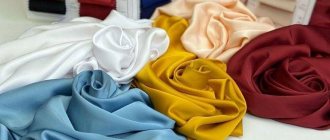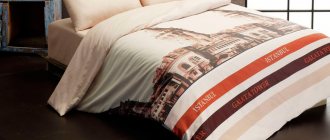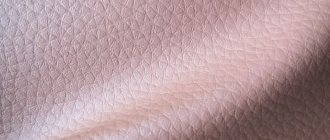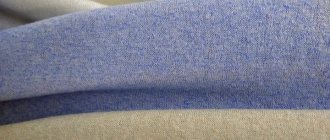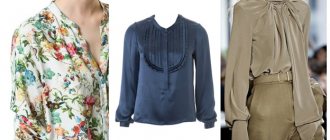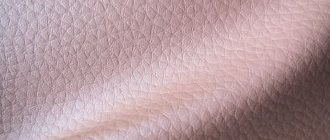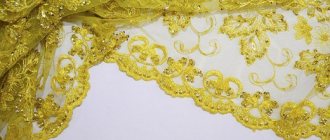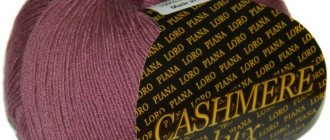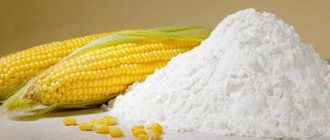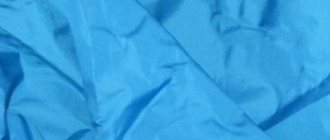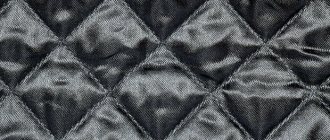Clothing with a membrane has long become a necessary attribute of winter fishing and hunting. It not only protects from wind and getting wet during sleet or heavy rain, but also retains heat perfectly.
Today, the market for winter clothing with a membrane is very diverse. There are many manufacturers, each of which offers membrane fabric with different indicators of waterproofness and vapor permeability. In addition, all brands are in different price categories, which makes clothing with a membrane accessible to everyone.
Read more about manufacturers, membrane properties and characteristics in our article.
Why are membrane fabrics needed?
Membrane fabrics: samples
The word “membrane” has ancient origins and means “membrane”. In ancient times it was used in everyday and biological senses. As science developed, the term acquired physical, chemical, and technical meaning. Now membrane technologies are used in light industry for the production of clothing.
One of the main functions of clothing is protective. Previously, rubber shoes, plastic raincoats, and capes made of other waterproof fabrics were used to protect against rain. These materials protected well from rain, snow, and wind for some period of time. It is impossible to stay in waterproof products made using old technologies for a long time.
On average, the human body releases more than half a liter of moisture per day, which accumulates on clothes from the inside if there is no way out. With active movements, the volume of sweat released can reach one and a half liters.
The introduction of membranes into the composition of protective fabrics allows water vapor to be removed while preventing moisture, wind, rain, and snow from getting inside.
Description
What is membrane tissue and what features does it have? Innovative raw materials replaced outdated technologies that did not allow moisture to be removed and did not protect against the effects of external water.
The membrane material is of synthetic origin and belongs to the multilayer category:
- The outer coating repels moisture and performs an aesthetic function;
- The inner soft layer allows evaporation to escape and makes it comfortable to wear;
- The waterproof membrane is located between these two layers and is a thin film produced in accordance with GOST 28486-90.
Let us briefly note what this word means when translated from the original language. There is only one meaning - a membrane, a barrier. You already understand how membrane fabric works, which is indispensable in the production of the following types of products:
- Clothing for tourism and mountaineering;
- Sets for hunting and fishing;
- Suits for winter sports;
- Children's clothing - jackets, overalls, suits.
Membrane fabric is not only for jackets, this material is suitable for sewing any clothing intended for lovers of active physical activity.
Let's briefly talk about the composition? Today, the following raw materials are used for the manufacture of such materials:
- Teflon;
- Polyester;
- Polyurethane;
- Cotton;
- Bamboo fiber.
We got acquainted with the description of the raw materials and studied what it is - membrane fabric for jackets, overalls or suits. Modern industry is moving forward by leaps and bounds - nowadays we can talk about different types of material that have different characteristics.
See also: PU material - what is it?
Structure and mechanism of action of membranes
The simplest example of a membrane product is a cellophane bag (not to be confused with a plastic bag). If, for example, you pour a salted protein solution into a plastic bag and hang it in a container with clean water, then after a while the salt will penetrate through the pores of the cellophane into the water. Cellophane selectively allows small molecules to pass out, retains large ones inside, and water molecules from outside do not leak into the bag.
Operating principle of membrane fabric
The membrane layer in tissues works in a similar way. It allows small molecules to come out without letting anything in.
Membranes used in light industry are usually divided into porous (containing pores) and non-porous (supposedly not containing pores). This division is arbitrary, but widespread. It is advisable to use it.
- Membranes with pores are thin polymer layers with very small holes through which molecules of gaseous water (steam) can leak from the inside, but drops cannot fit there. Let us remind you of the school course: in a drop, water molecules “stick together” - they are in the form of associated groups. In the vapor state, water molecules are lonely, the distance between them does not allow them to unite. The American company Gore-TeX makes membrane fabrics from Teflon, per 1 cm2 of which there are about one and a half billion microholes - pores.
- Non-porous membranes act differently. They also contain many microcells with complex, sinuous shapes that resemble the structure of a sponge. Steam from the skin is absorbed into the cells, saturates the membrane, turns into condensed moisture and, due to the difference in partial pressure (this concept is also from school courses), is released out. This principle of release is possible because there is more vapor inside than outside. If, hypothetically, the owner of the clothes wears them into a sauna or other room with very high humidity, moisture will enter in the same way.
In some materials, different membranes are combined, a layer without pores is placed on the outside, and a layer on the inside with pores. The fabric is effective, but expensive.
Compound
Membrane fabrics today can be produced based on the following materials:
- Tensela. This material is obtained from eucalyptus wood. The fabric is distinguished by its softness, it is pleasant to the body and perfectly absorbs moisture. Follow the link to read in detail what Tencel fabric is.
- Polyester. This material is known to everyone for its ability to hold its shape. It is pleasant to the body, does not wrinkle, has high strength and a long service life. The properties of polyester fabric are described here.
- Cotton . This is a soft material that is pleasant to the touch. It does not create static electricity, retains heat and absorbs moisture. The link lists the types of cotton fabrics.
- Bamboo . This fabric is hypoallergenic and durable. It blocks the sun's rays, absorbs moisture and unpleasant odors, and is also pleasant to the body. Here you can find out what bamboo fiber is, whether it is synthetic or not.
- Teflon . This matter is equipped with micropores that are present on the outer surface. The material does not allow water to pass through, but moisture evaporates well without collecting inside. The disadvantage of the material is that the pores can become clogged, as a result of which the evaporation process is disrupted.
- Polyurethane . There are no pores on its surface. The material does not allow water to pass through. The moisture that is concentrated inside first accumulates on the wrong side and then evaporates. The downside of the canvas is that moisture evaporation does not occur immediately, which can result in the feeling that the product is wet. Also read which is better: polyurethane foam or holcon.
- Combined material . Inside the canvas there is a foam membrane, and on top of it is a protective layer. It prevents pores from getting clogged. This material has all the advantages that are characteristic of polyurethane and Teflon.
The photo shows the structure of the membrane fabric:
Comparison of terms of use
- All membrane tissues remove vapors from an area of high pressure to a zone of low pressure (as experts in the value gradient say).
- At high humidity, membranes with pores remove vapors better, especially if there is ventilation on the clothes. Poreless membranes are effective in relatively dry air environments. If the humidity is high or the ventilation is open, such a membrane will not work well.
- At low temperatures, a membrane with pores works better. At subzero material temperatures, poreless membranes simply freeze.
- The porous membrane can become clogged if not properly cared for or worn. Poreless membrane fabrics are durable and last a long time.
Shoes
Porous membrane technologies are widely used in the creation of modern footwear for outdoor activities.
Whether you engage in mountain sports: trekking, mountaineering, or want warm and reliable shoes to keep your feet warm and dry, shoes with GORE-TEX membranes will protect your feet from moisture and keep them comfortable.
Shoes with GORE-TEX have a construction that combines stretchy multi-layer materials, durable fabric linings and well-finished seams that resist outside water penetration.
GORE-TEX Extended Comfort
It is characterized by a high degree of removal of excess moisture from the foot. Maximum breathability even in hot weather and high activity.
Shoes with GORE-TEX Extended Comfort are used in trail sneakers, city shoes, and lightweight trekking boots.
Shoes with GORE-TEX Extended Comfort membrane in KANT stores
GORE-TEX Performance Comfort
The membrane is designed for outdoor sports, even in the worst weather. High breathability and average thermal insulation. For hikes - from easy to medium difficulty.
Shoes with GORE-TEX Performance Comfort membrane in KANT stores
GORE-TEX Insulated Comfort
This membrane is used in shoes that have a high degree of thermal insulation, which is designed to protect your feet from the cold in winter, in the city or during high-altitude climbs. Provides comfort even at extremely low temperatures. For mountaineering, ice climbing, mountain sports, city, “winter” shoes.
Shoes with GORE-TEX Insulated Comfort membrane in KANT stores
GORE-TEX SURROUND
GORE-TEX SURROUND is used in open and lightweight, urban or sports shoes. It is very good to use such shoes on hot days, during active walks.
Shoes with Gore-Tex Surround membrane in KANT stores
Main characteristics
Membrane fabrics are designed to protect against bad weather and create a sense of comfort for wearers. Functions justify the importance of key indicators.
- Waterproof. At high pressures in the water column, any fabric will begin to leak. Maximum tolerable exposure values are important for successful operation. Clothing intended for harsh conditions must withstand pressures of 20,000 mm water column and above. A value of 10,000 mm is acceptable for normal rainy weather conditions.
- Vapor permeability characterizes the mass of vapor in grams that 1 m2 of material can release in a given unit of time (usually 24 hours). The often found minimum vapor permeability is 3000 g/m2, the maximum is from 10,000 g/m2. This property is sometimes assessed by its ability to resist steam transport (RET). If this indicator is 0, the fabric completely transmits all steam; with a value of 30, the passage of steam is practically eliminated.
The membrane does not perform insulating functions. It protects from rain, wind, snow, provides “breathing” to the body, and helps provide thermal comfort.
Insulation materials
Insulation materials heat thanks to the air that the fibers of the materials hold inside.
■ Thinsulate
Created in the USA as a material for spacesuits. Consists of microfibers that are 50 times thinner than hair. Thanks to this, a lot of air is retained in a small volume. Thinsulate is used to make not only insulation for clothing, but also hats and gloves.
Features: similar in structure to natural down, but one and a half times warmer and much more durable. Breathable, does not absorb moisture, does not lose shape when washed.
Temperature range: up to -60°С. For active walks at -15°C, an insulation density of 150 g/m² is sufficient.
Price category: ***
■ Isosoft
Belgian insulation, which consists of thin spherical fibers. Holds heat very well. But now there are many Chinese counterfeits, so it is better to buy clothes from well-known brands.
Features: elastic, breathable, does not absorb moisture, dries quickly.
Temperature: up to -40°C. For a certain temperature range, its own insulation density is calculated. If the label says “100-150 g/m²”, the clothing is not suitable for cold weather. More than 200-250 g/m² - designed for harsh winters.
Price category: **
■ Holofiber
Thanks to hollow polyester fibers in the form of springs, the insulation retains air well. To avoid buying a fake, look for the designation “on the product label. There are similar insulation materials from other brands - their fibers differ in shape and some properties: fibertek, fiberskin, holophane.
Features: does not cake, does not allow moisture to pass through, breathable.
Temperature: up to -40°C. For 20-25 degrees below zero, insulation with a density of 250 g/m² is suitable.
Price category: *
Price category: *** - from 10 thousand rubles. and above, ** - 7-10 thousand rubles, * - from 3-4 thousand rubles.
Fabric structure
Structurally, membrane fabrics differ in design.
- In two-layer fabrics, the membrane is fixed on the inside of the fabric. Additionally, it is covered with a lining that protects it from damage and clogging.
- In three-layer fabrics, the outer layer, membrane, and inner mesh are glued together. There is no need for a lining layer. The material is very comfortable, it costs more.
- In some modifications, a special protective coating is sprayed onto the inner surface of the two-layer fabric.
- There are types of membrane fabrics with a water-repellent layer (DWR) applied on top. The coating may wash off over time. It is easily restored using special means.
Leading manufacturers
Membrane fabric in clothing
The most authoritative, historically the first company producing membrane fabrics is Gore-TeX. She made clothes for astronauts. Then several types of products were offered to skiers, climbers, and mountain tourists.
Clothing with Triple-Point, Sympatex, ULTREX membranes is comparable in quality. The material is good quality and is available in several modifications. The price is high, consistent with the properties of the products.
Products with Ceplex and Fine-Tex membranes have an affordable price. It is designed for a maximum of 2 seasons of active wear, after which the material may begin to leak a little water.
When buying clothes made from membrane fabrics, pay attention to the information about taping seams. In some varieties, absolutely all seams are taped, in others - only the main ones. For wearing in the city, taping the main seams is enough. For active sports, it may be better to choose products with all reinforced seams. The choice is up to the potential owner of the clothing.
How to wear membrane clothing correctly
By the way
Membrane clothing may not have insulation, but then it is suitable for very active walks and sports.
First layer: this can be a long-sleeve T-shirt or turtleneck, tights (leggings, trousers) or thermal underwear.
Synthetics should be present, since pure cotton absorbs and does not wick moisture. Second layer: clothing made of fleece or wool (with a small addition of synthetics). But you should not wear it at temperatures above -15°C if the outerwear has high-quality insulation from 100 g/m² and above.
Third layer: jacket/suit/overalls.
Rules for caring for membrane tissues
The material is specific in composition and structure. Conventional washing techniques should not be applied to this group of products.
- You can wash fabric with a membrane layer in a machine using a gentle cycle and mild special products.
- You can't do push-ups in the car.
- Cannot be dry cleaned.
- There is no need to iron, there is no need to do this.
- Can be washed by hand if desired.
- You can leave the item in an arbitrarily straightened state so that water drains from it.
- The fabric gets dirty very little. After wearing and drying, it can be lightly cleaned with a regular brush.
Fabrics with membrane materials allow you to feel protected in any bad weather during the most active activities.
